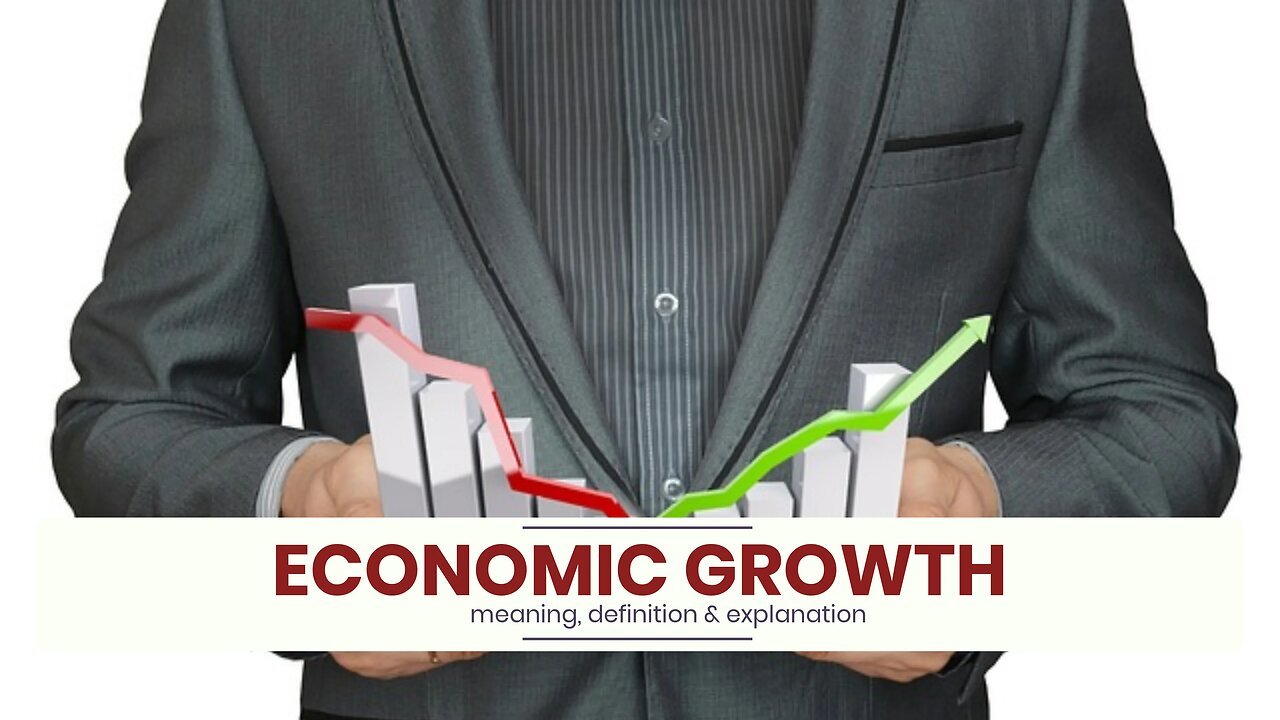Premium Only Content

What is ECONOMIC GROWTH?
✪✪✪✪✪
http://www.theaudiopedia.com
✪✪✪✪✪
What does ECONOMIC GROWTH mean? ECONOMIC GROWTH meaning - ECONOMIC GROWTH definition - ECONOMIC GROWTH explanation. What is the meaning of ECONOMIC GROWTH? What is the definition of ECONOMIC GROWTH? What does ECONOMIC GROWTH stand for? What is ECONOMIC GROWTH meaning? What is ECONOMIC GROWTH definition?
Economic growth is the increase in the inflation-adjusted market value of the goods and services produced by an economy over time. It is conventionally measured as the percent rate of increase in real gross domestic product, or real GDP, usually in per capita terms.
Growth is usually calculated in real terms – i.e., inflation-adjusted terms – to eliminate the distorting effect of inflation on the price of goods produced. Measurement of economic growth uses national income accounting. Since economic growth is measured as the annual percent change of gross domestic product (GDP), it has all the advantages and drawbacks of that measure.
The "rate of economic growth" refers to the geometric annual rate of growth in GDP between the first and the last year over a period of time. Implicitly, this growth rate is the trend in the average level of GDP over the period, which implicitly ignores the fluctuations in the GDP around this trend.
An increase in economic growth caused by more efficient use of inputs (such as labor productivity, physical capital, energy or materials) is referred to as intensive growth. GDP growth caused only by increases in the amount of inputs available for use (increased population, new territory) is called extensive growth.
The economic growth rate is calculated from data on GDP estimated by countries´statistical agencies. The rate of growth of GDP/capita is calculated from data on GDP and population for the initial and final periods included in the analysis.
In national income accounting, per capita output can be calculated using the following factors: output per unit of labor input (labor productivity), hours worked (intensity), the percentage of the working age population actually working (participation rate) and the proportion of the working-age population to the total population (demography). "The rate of change of GDP/population is the sum of the rates of change of these four variables plus their cross products."
-
 1:26
1:26
The Audiopedia
1 year agoWhat is MOTTO?
50 -
 2:59:56
2:59:56
Laura Loomer
6 hours agoEP143: Remembering Charlie Kirk (1993–2025)
74.1K58 -
 58:04
58:04
Man in America
9 hours agoCharlie Kirk’s Assassination—An URGENT WARNING for America
48.6K55 -
 1:22:15
1:22:15
Glenn Greenwald
7 hours agoCharlie Kirk Assassination Fallout: U.S. Reps Call for Censorship; Do Graphic Videos Serve the Public Interest? Plus: WIRED Reporter on the Dark Side of Surrogacy | SYSTEM UPDATE #513
172K154 -
 1:48:36
1:48:36
Right Side Broadcasting Network
13 hours agoLIVE: President Trump Attends the Yankees Baseball Game - 9/11/25
146K24 -
 1:54:32
1:54:32
Badlands Media
7 hours agoBadlands Media Special Coverage - FBI Press Conference on Charlie Kirk's Assassination
121K18 -
 1:06:19
1:06:19
BonginoReport
8 hours agoManhunt Underway for Charlie Kirk’s Assassin - Nightly Scroll w/ Hayley Caronia (Ep.132)
272K218 -
 1:11:42
1:11:42
Flyover Conservatives
16 hours agoStructural Architect Destroys 9.11 Narrative... What Really Happened? - Richard Gage AIA | FOC Show
73.6K13 -
 1:51:14
1:51:14
Precision Rifle Network
12 hours agoS5E1 Guns & Grub - Charlie Kirk's "sniper"
42K12 -
 13:09:12
13:09:12
LFA TV
19 hours agoLFA TV ALL DAY STREAM - THURSDAY 9/11/25
406K93